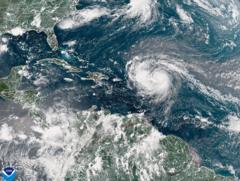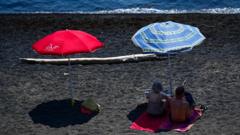The article text:
As night enveloped the Panama Canal, scientists embarked on their essential research, casting long nets into the waters while the sounds of the jungle surrounded them. This rich ecosystem, which has served as a critical conduit for global trade for over a century, is now at a crossroads due to ecological disruptions following the canal’s expansion designed to accommodate larger cargo vessels.
Historically, the Atlantic and Pacific Oceans have been separated for around three million years, with fish species rarely crossing between them. However, the canal's expansion in 2016 has significantly altered this dynamic. Evidence gathered by scientists from the Smithsonian Tropical Research Institute indicates that invasive fish species, such as snooks and jacks, are rapidly displacing native freshwater species in Lake Gatún and the surrounding canal system.
Fishermen who once thrived on the local species, particularly peacock bass and tilapia, are now reporting declining catches as these invasives take over. The situation poses a serious concern for those who rely on fishing for their livelihood.
Adding to the alarm is the potential entry of the venomous lionfish, native to the Caribbean but not yet present in the eastern Pacific. If this invasive species navigates through the canal, it may follow the detrimental patterns observed in other regions like the Gulf of Mexico.
In summary, while the Panama Canal plays an integral role in connecting industries globally, its expansion has inadvertently fostered ecological upheaval—highlighting the intricate relationship between human activity and environmental health. Further research and intervention may be required to manage and mitigate these unforeseen consequences.
As night enveloped the Panama Canal, scientists embarked on their essential research, casting long nets into the waters while the sounds of the jungle surrounded them. This rich ecosystem, which has served as a critical conduit for global trade for over a century, is now at a crossroads due to ecological disruptions following the canal’s expansion designed to accommodate larger cargo vessels.
Historically, the Atlantic and Pacific Oceans have been separated for around three million years, with fish species rarely crossing between them. However, the canal's expansion in 2016 has significantly altered this dynamic. Evidence gathered by scientists from the Smithsonian Tropical Research Institute indicates that invasive fish species, such as snooks and jacks, are rapidly displacing native freshwater species in Lake Gatún and the surrounding canal system.
Fishermen who once thrived on the local species, particularly peacock bass and tilapia, are now reporting declining catches as these invasives take over. The situation poses a serious concern for those who rely on fishing for their livelihood.
Adding to the alarm is the potential entry of the venomous lionfish, native to the Caribbean but not yet present in the eastern Pacific. If this invasive species navigates through the canal, it may follow the detrimental patterns observed in other regions like the Gulf of Mexico.
In summary, while the Panama Canal plays an integral role in connecting industries globally, its expansion has inadvertently fostered ecological upheaval—highlighting the intricate relationship between human activity and environmental health. Further research and intervention may be required to manage and mitigate these unforeseen consequences.



















